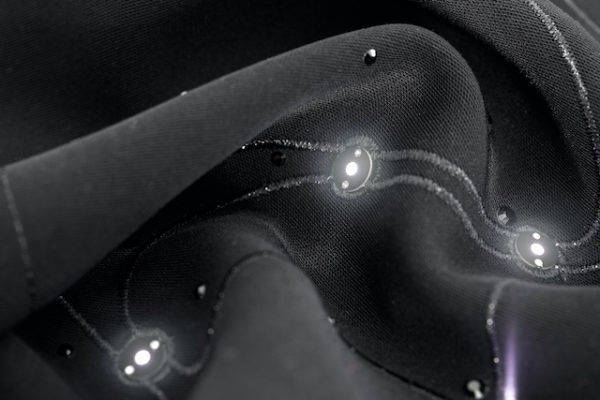E-Textiles & Interiors
AATCC News , March 07, 2017
To the typical consumer, “textiles” mean clothes. But a quick glance around the room is all it takes to realize that textiles go into much more than apparel. They’re everywhere. Now companies seeking to integrate textiles and electronics are discovering that home goods and interiors are especially promising early markets.
“We forget how much of textiles is around us at home—on our bed, the carpets, the chairs, the sofas,” says Mili John Tharakan, director of technology and e-textiles for TILT Textiles Inc. (owned by Welspun Global Brands Ltd.). Home textiles, she notes, are “so ubiquitous that people stop noticing. But it is this very ‘ubiquitiousness’ that makes it a really interesting space for e-textiles.”
Started in 2014, TILT’s mandate is to find ways to bring electronics into Welspun’s traditional home goods business. Its first product line, called SpinTales, debuted last November and is sold on ToysRus.com and Amazon.com. The line includes a duvet and rug, each decorated with a colorful storybook landscape. Augmented reality markers in the design synch with a smart phone app, allowing children to play with storybook characters who seem to be right there on their bed or floor.
One advantage of home goods, Tharakan notes, is “real estate. You don’t have to worry about shrinking all the tech and electronics into a tiny box hidden in the apparel.”
Curtains, carpets, and duvet covers also don’t get washed as often as apparel and they don’t have to stretch and move as much—both major obstacles to combining electronics and clothes.
“Nothing that is done in the electronics industry even compares to what happens in a washing machine to an electronic product,” says Jan Zimmermann, the head of Forster Rohner Textile Innovations, the e-textiles division of the venerable Swiss embroidery firm Forster Rohner AG. Using proprietary processes and a library of 140 different conductive yards, Forster Rohner embroiders circuitry into products ranging from pressure-sensing factory floor pads to wearable ECG monitors. In a business still marked by one-off prototypes, it produces washable fabrics at industrial scale.

Forster Rohner is best known for integrating LED lighting into fabrics. Although it has worked for clothing brands from Akris to Z Zegna, most of its work, says Zimmerman, is “using light as a new aesthetic expression within interior design—whether it’s curtains, wall panels, wall hangings, carpets, or even bed sheets.”
The interior design process is more compatible with the technology. Fashion designers are used to buying yards of fabric and cutting out different patterns until they like the results. But getting circuits in the right positions requires advance planning. “We need to know the cut of the piece so that we can design the function to the cut,” says Zimmerman. The pieces can’t change at the last minute. Curtains rarely present such problems.
Interiors products are also easier to power. Batteries don’t have to be tiny, and for many applications, you can simply plug into the grid.
The biggest problem e-textiles face is pricing. People expect fabric to be cheap. Here, too, interior applications might open new markets—and perhaps some minds. TILT has tapped into the toy industry, while Forster Rohner is reaching out to furniture and lighting suppliers. “Go to a textile trade fair,” says Zimmermann, “and you will see fabrics—no matter how they look like, no fabric, no curtain you can buy in the world is as expensive as a reading lamp.” Fabrics that twinkle with electronic lights may eventually change that.